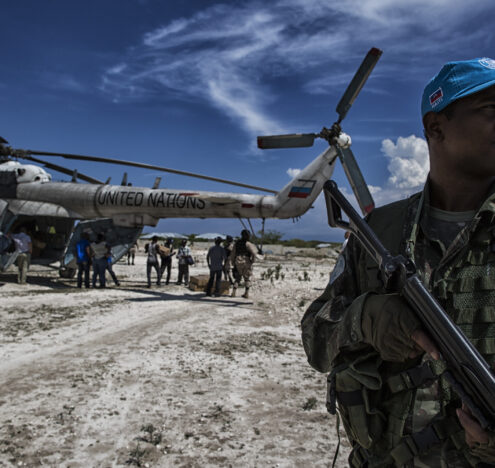Friday, I watched an American citizen defect to a foreign government.
As an active duty military officer, I felt a moral and patriotic obligation to intervene. I couldn’t contain myself. Wearing my dress uniform I boldly strode across the stone embassy floor and gave the deserter a piece of my mind.
“Congratulations my man! That was awesome and I’m proud of you. Best of luck!” I beamed as I shook his hand. I trust I would have had stronger words for Edward Snowden.
But this was different. Friday, I watched an American join the Australian military.
I spent a large part of my naval career as a flight instructor teaching new aviators how to fly and fight the Navy’s FA-18E/F and EA-18G aircraft. One of my students completed his required military service with honors and accolades and recently left active duty. Surrounded by his family, mentors, wingmen, and friends he stood in the atrium of the Australian embassy, raised his right hand, and swore allegiance to fight for the Queen. He and his wife headed down under the next morning with his Air Force commission finalized and his immigration papers in process. As of this week, he is a permanent Australian resident and military officer.
How does a Yankee aviator wind up fighting for the Queen? As our immigration debate continues, there are frequent comparisons and references to the “Australian model.” Australia is forthright and unapologetic about its policies – as it needs to be. Anyone who, like me, has spent time in Sydney or Perth can’t help but marvel at the exotic beauty of the land, the unique culture of the society, and the contentment of the people. By my second visit, I pondered aloud, “Why doesn’t everyone come here and just stay?” Apparently, that isn’t an uncommon thought.
A 2014 review of Australian immigration policy “identified the need for a shift in focus away from ‘supply driven’ independent skilled migration towards ‘demand driven’ outcomes.” Turns out a lot of people want to come to Australia, creating plenty of immigration supply. The demand-driven model looks for “skilled migrants employed in industries that have the highest need.” In other words, we got your resume, don’t call us we’ll call you.
In some ways, his decision breaks my heart. The US Navy and the Air Force both have well-publicized pilot retention problems.
There is no Australian Statue of Liberty proclaiming to her hemisphere “give me your tired, your poor, your huddled masses yearning to be free.” The 2019 guidelines decree “The purpose of migration is to build the economy, shape society, support the labour market and reunite family.” There are strict language proficiency requirements and the majority of visas are employer-sponsored. Immigration will create 190,000 new Aussie citizens this year. Almost 70% will fill skill shortages in the labor market under the “skill stream” allocation. In a country roughly the size of the United States with a population smaller than Texas, if you need, say a heart surgeon you are better off posting the job on the global market than relying on local talent to fill the need.
The challenge for the Australian military is that Boeing can build a fighter jet in about six months, but it takes closer to ten years to fully train a tactics instructor. As military tensions rise in their neighborhood, Australia doesn’t have that kind of time, so this year, one of the “skilled labour” spots was allocated to fill the shortage of combat experienced aircrew. My friend, a great American and patriot, enthusiastically took that spot.
In some ways, his decision breaks my heart. The US Navy and the Air Force both have well-publicized pilot retention problems. Facing increased pressure from the airlines, the Air Force recently announced a $350,000 pilot bonus in exchange for 10 years of service. Last year, the Navy tried to stem the talent exodus by offering its own $100,000 bonus for command experienced senior aviators. The military has tried adjusted career flexibility, expanded flying opportunities, hiring priority for spouses, incentivized education, and updated human resources programs – all with the goal of recruiting and retaining the most talented and qualified officers. Whether our motivation is personal, political, or financial, the US can’t have its most upwardly mobile aviators go fly for another country – it is as demoralizing as it is unsustainable.
But on the other hand, it may also be exactly what we need. Secretary James Mattis signed the 2018 National Defense Strategy focused around three pillars; increasing lethality, reforming the business practices of the Pentagon, and strengthening allies and partners. With increased tension on both our economic and national security treaties it should not be overlooked that an essential element of the Department of Defense’s strategy is alliance building and partnerships. Most of us on active duty understand that our nationalist instincts cannot supersede our dependence on foreign partners. Our alliances are essential to the preservation of the liberal world order. As we return our focus towards great power competition we will rely on coalitions and partnerships as much as ever before. Few, if any, of our partners have been as loyal as Australia.
Hanging in the Australian embassy was a large banner celebrating “100 years of Mateship” commemorating the centennial of Australian and American soldiers’ joint fight during World War I. During the western front battle of Hamel, a young and inexperienced group of American soldiers fought under Australian direct command – fighting shoulder to shoulder for the first time with our Aussie allies. Chairman of the Joint Chiefs of Staff, General Joe Dunford remarked at a June 27th ceremony honoring the anniversary, “That mateship – that partnership – continued through World War II, Korea, Vietnam, Desert Storm, Somalia, and – most recently – in Afghanistan and Iraq.” That partnership continues today during peacetime operations in the Indo-Pacific.
My friend was the first “Growler” aircrew to leave for Australia but he won’t be the last. Today, America may have lost a skilled aviator from our ranks, but one of our closest allies gained experience and expertise. After 100 years we continue to strengthen and secure one of our most significant strategic relationships, and that is worth celebrating. Cheers, mate.
Brendan Stickles is a Federal Executive Fellow at the Brookings Institution and was most recently the commanding officer of an aircraft carrier based EA-18G squadron. The views expressed are his alone and do not reflect the official policy or position of the United States Navy, US Department of Defense, or the U.S. Government.





















